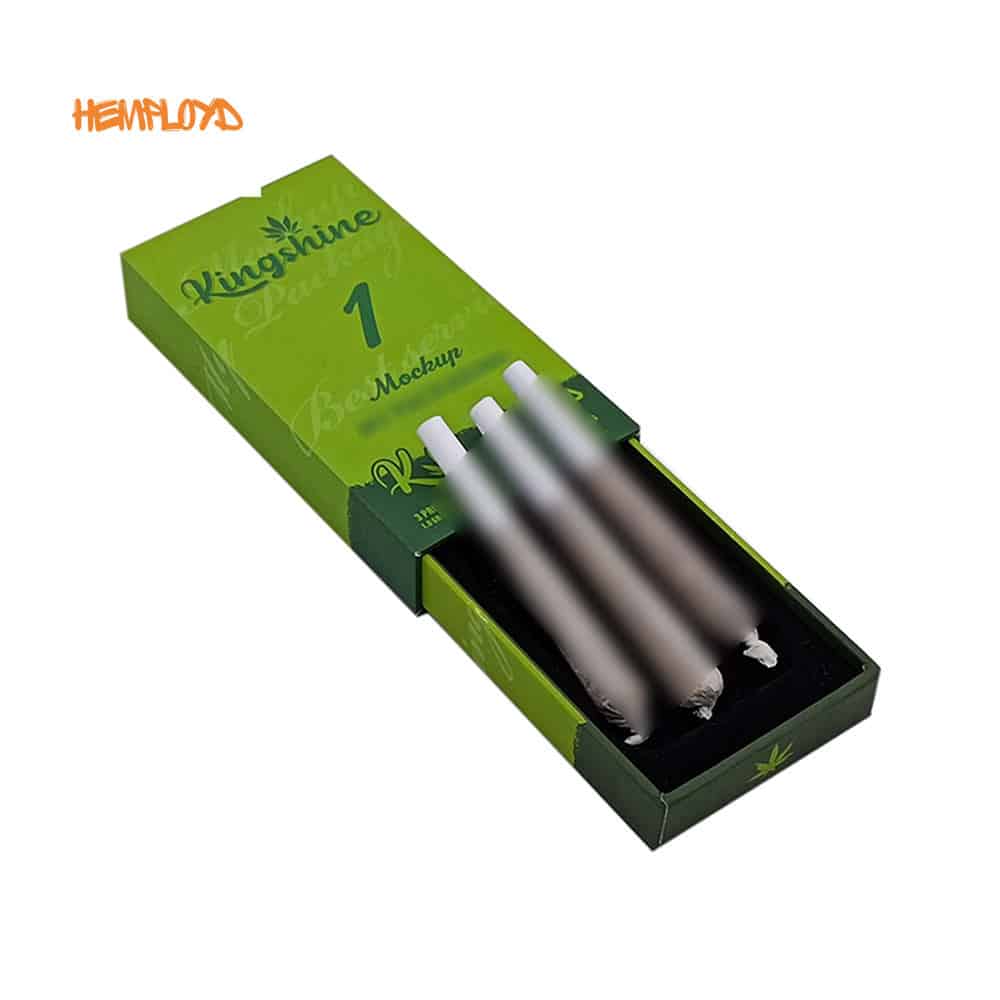Why Is Mold a Serious Risk During Cannabis Shipping?
Mold growth during cannabis shipping is a serious concern that can compromise the quality and safety of the product. This problem can lead to financial losses, regulatory issues, and potential health risks. Cannabis is a delicate product that requires specific conditions for safe transit.
Mold grows in environments with high wetness and temperature fluctuations. During transit, cannabis can be exposed to these factors, especially when traveling through hot and wet climates. I recall a time when we shipped a batch of cannabis flowers across a humid region, and by the time it arrived, we found visible signs of mold on the product. It was a wake-up call for us to start noticing packaging that truly protects the cannabis. Since then, we’ve worked closely with our suppliers to develop airtight packaging solutions that prevent steam from seeping in.

What Is the Impact of Mold on Cannabis Products?
Mold is more than just an visual issue; it can negatively affect the chemical composition of cannabis, leading to a decline in effect and flavor. Moreover, mold pollution poses health risks for consumers, as certain types of mold can produce harmful mycotoxins. These toxins may cause allergic reactions, respiratory issues, and other health problems. Workers in the cannabis industry also face occupational exposure risks leading to sensitization and allergic symptoms[4].In some regions, cannabis that tests positive for mold may fail quality assurance checks and be rejected, leading to wasted product and resources.
Mold growth can also cause logistical challenges. Once cannabis is polluted, it may need to be or treated, which increases operational costs. If the mold spreads during transit, it can affect other batches of cannabis, leading to larger-scale losses. This makes mold an issue that must be addressed at every stage of the shipping process.
What Happens to Cannabis Products in Hot and Humid Transit Conditions?
Hot and humid conditions create the perfect environment for mold to thrive, as mold spores require moisture, warmth, and limited airflow to grow. When these factors align, as they often do in summer months or tropical climates, mold can spread rapidly, particularly in organic materials like cannabis. This is a serious concern for any cannabis business, as even minor exposure to humidity or temperature fluctuations can lead to mold contamination, which not only ruins the product but can also create significant health risks for consumers. Proper storage and transportation conditions are critical in ensuring cannabis products remain safe, potent, and of high quality. Without the right precautions, mold can affect the appearance, aroma, and even the chemical composition of cannabis, rendering it unsuitable for sale or consumption.
To fully understand the severity of mold contamination, let’s look at some common mold types found in cannabis and their associated health risks. The following table outlines the primary health risks from exposure to these molds, emphasizing the vulnerability of specific populations.
Table 1: Summary of Health Risks Associated with Common Cannabis Molds
| Mold Type | Primary Route of Exposure | Key Health Risks | Vulnerable Populations Most Affected |
|---|---|---|---|
| Aspergillus species | Inhalation, Ingestion | Respiratory irritation, Allergic reactions (Allergic Bronchopulmonary Aspergillosis), Lung infections (Aspergillosis), Mycotoxin exposure (Aflatoxins) | Immunocompromised, Asthma/Respiratory patients |
| Penicillium species | Inhalation, Ingestion | Respiratory issues, Allergic reactions, Mycotoxin exposure (Penicillic acids), Potential mycotoxicosis | Immunocompromised, Allergy-prone individuals |
| Botrytis *cinerea | Inhalation | Respiratory problems, Allergic reactions ("Bud Rot") | Individuals with respiratory sensitivities, Allergy-prone individuals |
| General Mold Spores | Inhalation, Ingestion | Coughing, Wheezing, Shortness of breath, Chest tightness, Nasal congestion, Throat irritation, Skin rashes, Nausea, Dizziness, Headaches, Fatigue | Immunocompromised, Respiratory patients, Allergy sufferers, Elderly, Young |

How Do Temperature and Humidity Affect Cannabis During Transit?
Cannabis is particularly fragile to mold during hot, humid transit due to the porous nature of the plant material. When cannabis is exposed to these conditions, it can absorb moisture from the air, which promotes mold growth. If the packaging is not properly sealed, the moisture content inside the packaging can increase, creating the perfect environment for mold spores to thrive.
In addition, rapid temperature fluctuations can also contribute to the mold issue. As the temperature rises and falls, the moisture inside the packaging condenses and creates damp conditions, which further encourages mold growth. Without the right packaging and climate control, mold will inevitably form, compromising the integrity of the product.
To effectively protect cannabis during transit, it is essential to maintain optimal environmental conditions. The following table summarizes the key parameters to monitor, which help reduce the risk of mold and preserve product quality. These factors should be carefully controlled throughout the shipping process.
Table 2: Optimal Environmental Parameters for Cannabis Storage/Transport
| Parameter | Optimal Range | Rationale / Risks Outside Range | Key Considerations for Shipping |
|---|---|---|---|
| Water Activity (aw) | 0.55 – 0.65 aw | <0.55: Dry, brittle, terpene/cannabinoid loss, harsh smoke. >0.65: Increased risk of mold, yeast, bacteria growth. | Primary metric for microbial safety. Must be maintained throughout transit. Requires control of Temp & RH. |
| Moisture Content (MC) | ~10% – 12% (secondary metric) | <10%: Brittle, loss of weight/profit. >15%: Higher potential for high aw, increased microbial risk. | Influences weight, texture, profitability. Less reliable indicator of safety than aw. |
| Temperatuur | ~60°F – 70°F (15°C – 21°C) | <60°F: Potential trichome damage (brittleness). >77°F (25°C): Increased mold risk, terpene/cannabinoid degradation. | Stability is key. Avoid fluctuations. ASTM D8432: <30°C (86°F) cumulative exposure >2 hrs. Prevent condensation during temp shifts. |
| Relative Humidity (RH) | 55% – 65% (in equilibrium) | <55%: Drying, terpene/cannabinoid loss. >65%: Supports mold growth. | Maintain stable RH within packaging and/or transport container to keep product aw in range. Prevent condensation. |
What Are the Key Mold-Triggering Factors During Distribution?
Several factors can trigger mold growth during cannabis distribution. These factors range from inadequate packaging to improper storage conditions. Let’s break them down.

1. Poor Storage and Handling
If cannabis is stored or handled improperly during transit, it can easily become exposed to mold-causing conditions. For example, warehouses with poor ventilation or inadequate climate control can allow humidity to build up. If the cannabis is not stored in a cool, dry place, the risk of mold increases significantly.
2. Lack of Climate Control
As cannabis moves through different regions during transport, climate control plays a critical role in preventing mold growth. Hot and humid weather increases the chances of mold contamination. Without climate-controlled vehicles or storage units, the temperature and humidity fluctuations can lead to mold development.
3. Shorten Transit Times
Longer transit times give mold more time to develop, especially if the product is not stored under optimal conditions. When cannabis sits in transit for extended periods without proper temperature and humidity control, it becomes more susceptible to mold growth.
One of the most effective ways to ensure the safe transport of cannabis in high-heat environments is to use temperature-controlled transport methods. The following table compares the two primary options—passive and active temperature control—highlighting their strengths and weaknesses. This comparison can help you determine which method is best suited for your product’s needs.
Table 3: Comparison of Temperature-Controlled Transport Options
| Transport Method | Temperature Control Precision | Humidity Control Capability | Typical Use Case | Voordelen | Nadelen | Monitoring Needs |
|---|---|---|---|---|---|---|
| Passive (Insulated Container + Coolant) | Lower / Moderate | Limited / None | Shorter transit times, Less temperature-sensitive products, LTL shipments | Lower upfront cost, No energy use during transit | Less precise control, Limited duration, Risk of excursions, Potential waste (single-use coolants/packaging) | Data logger essential for verification |
| Active (Refrigerated Vehicle/Container) | High / Precise | Often Available | Long distances, Highly sensitive products, Strict temperature range requirements | Precise & continuous control, Reliable, Can handle extreme ambient temps | Higher initial & operational cost (fuel/energy), Requires maintenance | Real-time monitoring with alerts recommended |
What Are the Best Practices for Preventing Mold in Cannabis Transit?
In hot climates, preventing mold growth isn’t something that can be left to chance—it requires thorough planning and foresight. Understanding the environmental risks your products will face during transit is crucial. For cannabis, this means accounting for temperature fluctuations, humidity levels, and how these factors will impact the product’s integrity. Without proper precautions, exposure to heat and moisture can quickly lead to mold growth, which not only compromises the product’s quality but also its safety. When planning for transportation, we must take into consideration the time of year, the route the shipment will take, and the specific conditions along the way, such as humidity levels in certain regions. Having a strategy for managing these risks—whether through climate-controlled vehicles or specialized packaging—ensures that the cannabis remains safe and effective throughout the journey. It’s about being proactive, not reactive, and recognizing that mold prevention begins long before the product leaves the warehouse.
Preventing mold requires a combination of strategies to protect cannabis at every stage of the shipping process. Let’s explore some of the best practices for avoiding mold growth.

1. Start with Quality Packaging
Using high-quality, moisture-resistant packaging is one of the most important steps in preventing mold growth. Make sure your packaging is airtight and durable enough to withstand temperature and humidity changes during transport.
2. Choose the Right Transport Methods
When shipping cannabis, select transport methods that prioritize temperature and humidity control. Trucks or containers with HVAC systems that regulate the internal environment are ideal for shipping cannabis through hot or humid climates.
3. Keep an Eye on Humidity Levels
Monitoring and controlling humidity levels throughout the entire shipping process is essential. Use technology like data loggers that track temperature and humidity levels inside the packaging. These tools can alert you to any potential issues before they become a problem.
4. Conduct Regular Quality Checks
Inspect the cannabis at various stages of the shipping process. Conducting quality checks at the packaging stage, during transport, and before delivery can help you catch potential mold problems early. If mold is detected, take corrective action immediately, such as moving the product to a more suitable environment or discarding affected batches.
Conclusie
To prevent mold growth during cannabis transit, it is crucial to choose the right packaging, control environmental factors, and plan for efficient shipping methods. By addressing these factors, you can ensure your cannabis reaches its destination in top quality.
[^1]: Understanding the risks of mold in cannabis shipping can help ensure product quality and safety. Explore this link for detailed insights. [^2]: Discover the implications of mold as a serious risk in cannabis shipping, which can affect both health and product integrity. This information is crucial for stakeholders. [^3]: Learn about the challenges and risks in cannabis shipping to better navigate compliance and safety issues. This resource is essential for growers and distributors. [^4]: The Emerging Spectrum of Respiratory Diseases in the US Cannabis Industry – PMC,




